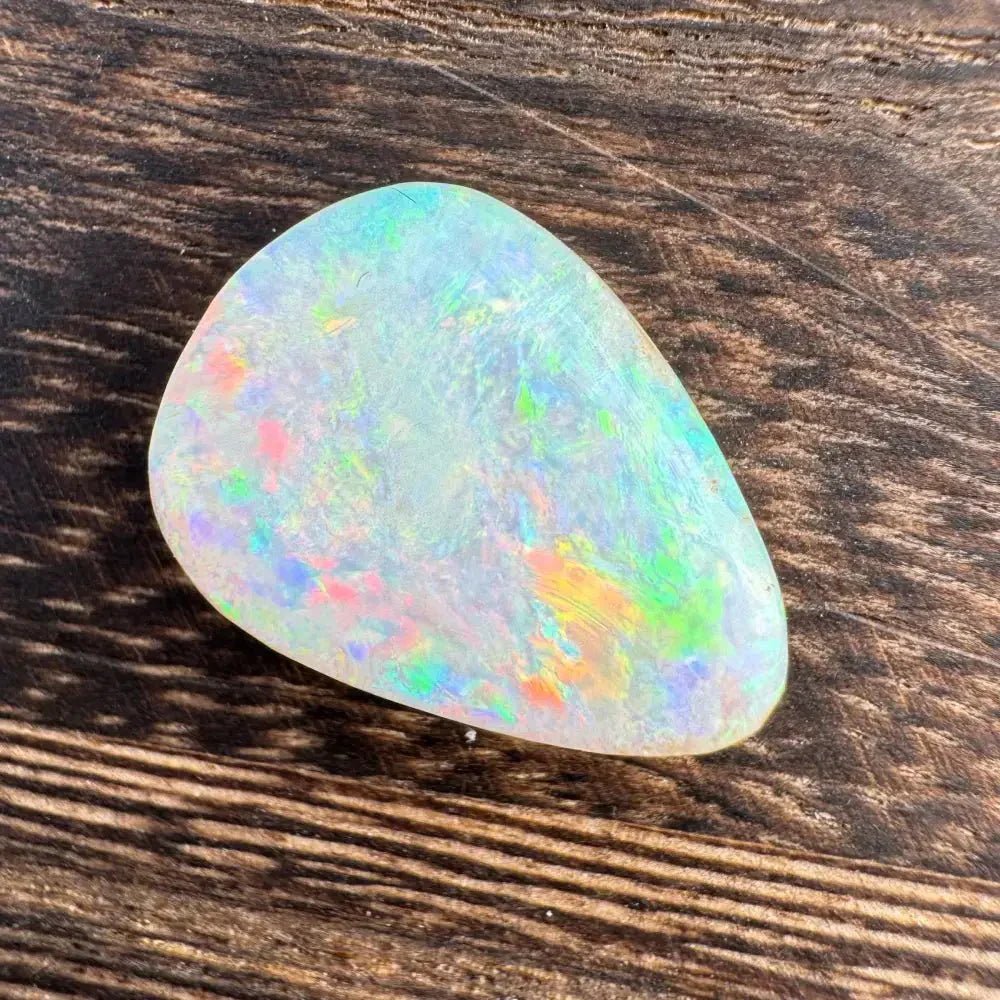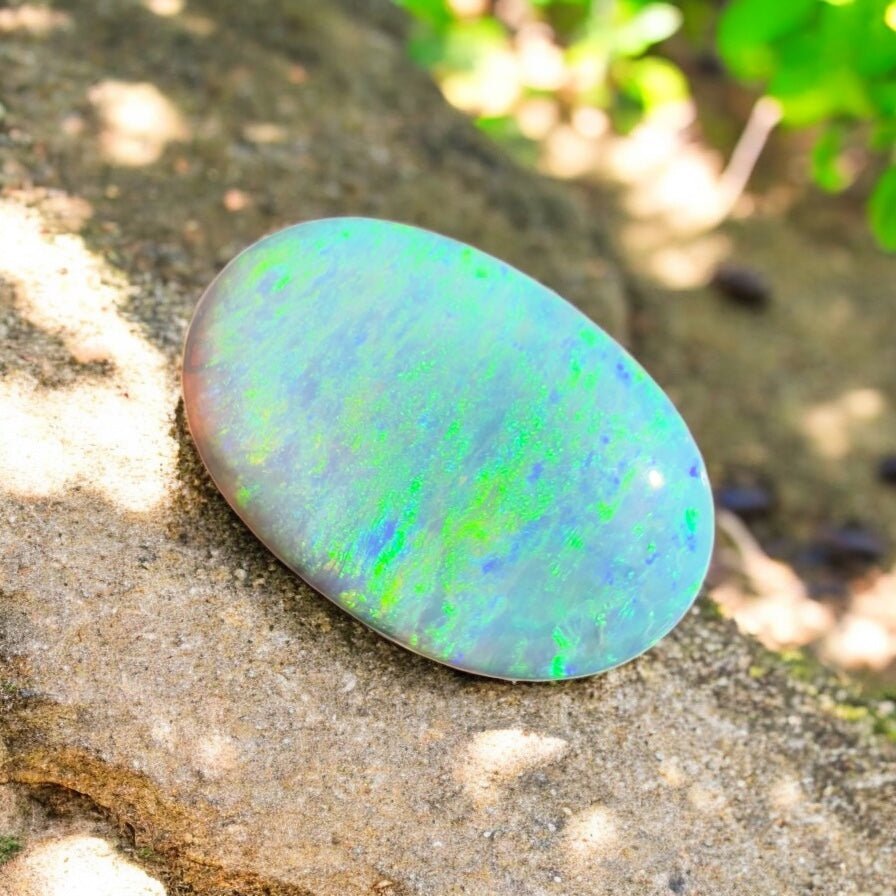
Doublets, Triplets and Solids: What’s the Difference in Opal Types?
When buying opal jewellery, the first thing to know is this: not every opal you see is a solid natural gemstone. At Iona Opal Australia, we only work with solid Australian opals—but many opals on the market are doublets or triplets. While they have their place, it’s essential to know the difference so you can shop confidently.
What Is a Solid Opal?
A solid opal is a single piece of natural opal—cut, polished and ready to be set into jewellery. These are the most valuable and durable opals, especially those sourced from Australia’s renowned fields like Coober Pedy, Lightning Ridge, and Andamooka. With no added layers or adhesives, they’re the most authentic form of opal available.
What Is a Doublet?
A doublet is made by gluing a thin slice of opal to a backing—usually black potch, plastic, or ironstone—to simulate the look of a solid black opal. While they can be visually appealing and more affordable, doublets are not as long-lasting and can be damaged if exposed to water over time.
What Is a Triplet?
A triplet includes a slice of opal sandwiched between a backing and a clear quartz or glass dome. These are typically the cheapest type of opal jewellery and are designed to exaggerate colour and brightness. However, they are the most prone to clouding, delaminating, and cracking, especially with everyday wear.
Why Choose Solid Australian Opals?
- Natural beauty: No glues, no layering—just the gemstone as nature intended.
- Durability: Solid opals can last generations with proper care.
- Value: They retain their worth over time and are sought after by collectors and jewellers alike.
When you purchase from Iona Opal Australia, you’re getting a 100% solid Australian opal—carefully selected, ethically sourced, and cut to highlight its natural brilliance. No tricks, no shortcuts—just real opals, the way they should be.




Leave a comment
This site is protected by hCaptcha and the hCaptcha Privacy Policy and Terms of Service apply.